The Angelbird Wings PX1 M.2 Adapter Review: Do M.2 SSDs Need Heatsinks?
by Billy Tallis on December 21, 2015 8:00 AM ESTMixed Random Access
Instead of testing a range of queue depths, our mixed workload tests vary the proportion of reads and writes while using a constant queue depth. The test begins with pure reads, then incrementally shifts toward pure writes with three minutes for each subtest. As more writes come in to the mix, the odds increase that a read request will be held up by one of the flash chips being busy with a longer-duration write. Likewise, having lots of reads in the mix can limit the drive's ability to combine writes into larger batches. Thus, the worst performance on these tests usually occurs somewhere around the middle. To approximate client workloads, the mixed random access test uses a queue depth of three and like the random write test it is restricted to a 16GB portion of the drive.
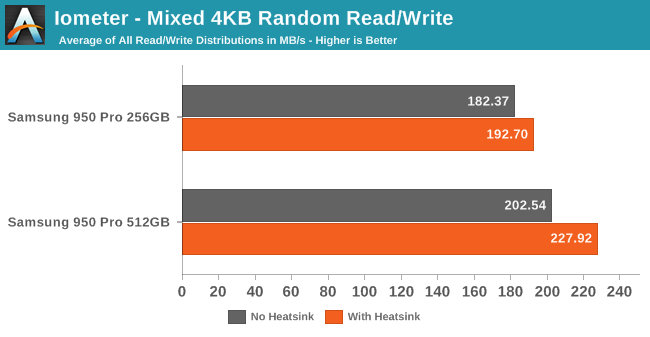
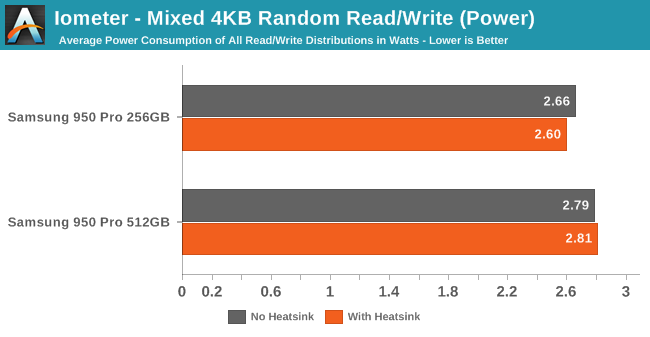
The mixed workloads were the only tests where the two capacities showed significant performance differences even without the heatsink, indicating that thermal throttling was much less of an issue for the 950 Pro here. The heatsink still helps, but only slightly. Given how random reads were essentially unaffected by the heatsink, it's a bit of a surprise that the writes improved by enough to bring the average up by 12.5% for the 512GB drive.
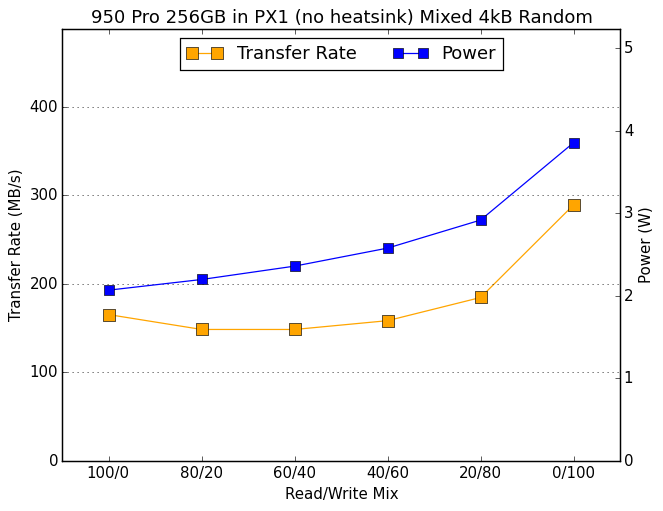 |
|||||||||
| 256GB no heatsink | 512GB no heatsink | ||||||||
| 256GB with heatsink | 512GB with heatsink | ||||||||
Almost all of the performance improvement with the heatsink comes at the very end of the test as it shifts to pure writes. Performance earlier in the test is virtually unaffected by the heatsink, but power efficiency does see the slight improvement from lower operating temperature.
Mixed Sequential Access
As compared with the mixed random test described above, the mixed sequential test differs by using a queue depth of one and by requesting larger chunks of data. This test operates across the whole drive, which is pre-filled with data.
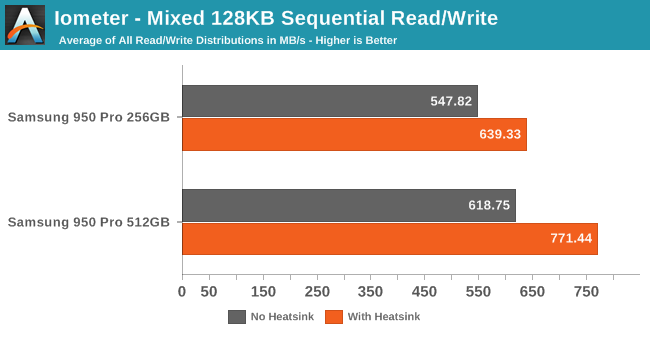
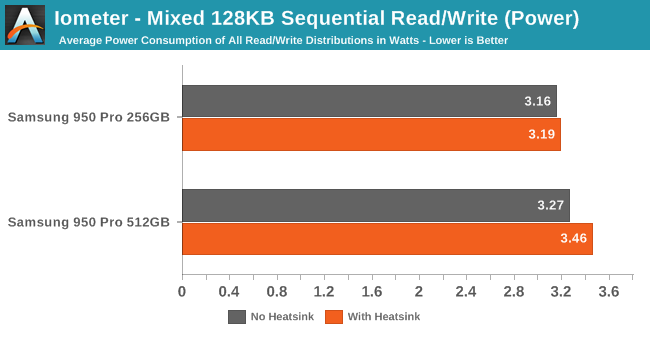
Both of the previous sequential performance tests showed huge improvements even at low queue depths, so it's no surprise to see a significant improvement in a mix of the two.
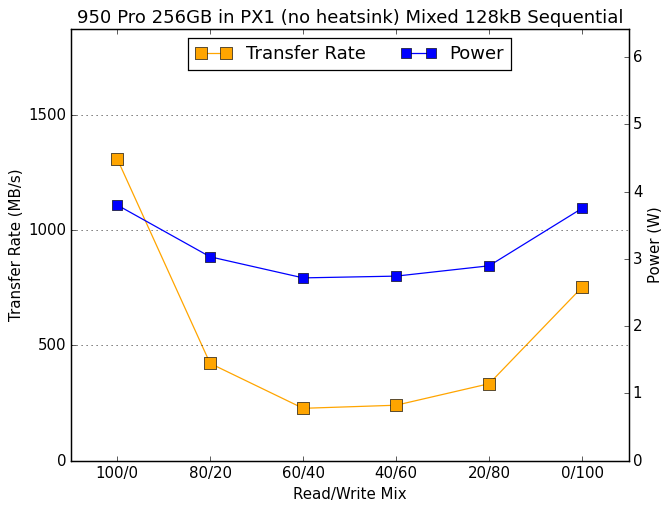 |
|||||||||
| 256GB no heatsink | 512GB no heatsink | ||||||||
| 256GB with heatsink | 512GB with heatsink | ||||||||
A closer look reveals that the overall performance improvements are once again attributable to the non-mixed segments of the test. Unlike the mixed random test, read speeds are part of the improvement here. But on the sub-tests with a balanced mix of reads and writes, the 950 Pro wasn't throttling even without the heatsink.










69 Comments
View All Comments
FunBunny2 - Monday, December 21, 2015 - link
^^that's funny
Breit - Saturday, December 26, 2015 - link
You mean something EKWB did for the Intel 750?http://www.ekwb.com/news/638/19/EK-is-releasing-In...
:D
meacupla - Monday, December 21, 2015 - link
I think this is where all those low profile, frag tape backed, RAM heatsinks, that came along with aftermarket GPU coolers, will come in handy.ironwing - Monday, December 21, 2015 - link
I wonder how much heat 25 LEDs add to a heat sink?mostlyharmless - Monday, December 21, 2015 - link
Yeah, and aren't the fins supposed to be external instead of internal?Billy Tallis - Monday, December 21, 2015 - link
They're really more like ducts than fins as designed. What air does manage to enter the heatsink will not all flow across the entire drive. Some of the fresh cool air will bypass part of the drive, and some of it will just be cooling the heatsink itself. It looks like a design that would be very effective with a lot of airflow, but the intake is pretty small.Billy Tallis - Monday, December 21, 2015 - link
The LEDs draw about 2W. Calculating how much of that gets converted to light that escapes the heatsink is left as an exercise for the reader.MrSpadge - Monday, December 21, 2015 - link
10 - 20 mW each.r3loaded - Monday, December 21, 2015 - link
So what we really need is the 950 Pro in a 2.5 inch drive and the U.2 interface. The bonus is drive capacities of 1TB and maybe even 2TB.Impulses - Monday, December 21, 2015 - link
Great write-up Billy, I appreciate you running the full battery of tests again and re-addressing the Bench scores... A review of a heatsink feels somewhat incomplete without a single temperature measurement tho! SMART readings or something taken with a simple IR thermometer would've been helpful, specially to the kind of DIY'er that's likely to buy this. I'm curious if i can replicate comparable results with a simple stick on heatsink and some airflow, it's particularly relevant for those of us with multiple GPUs where the add in card might put the drive in just as bad of a spot but the M.2 slot might be exposed to more airflow.